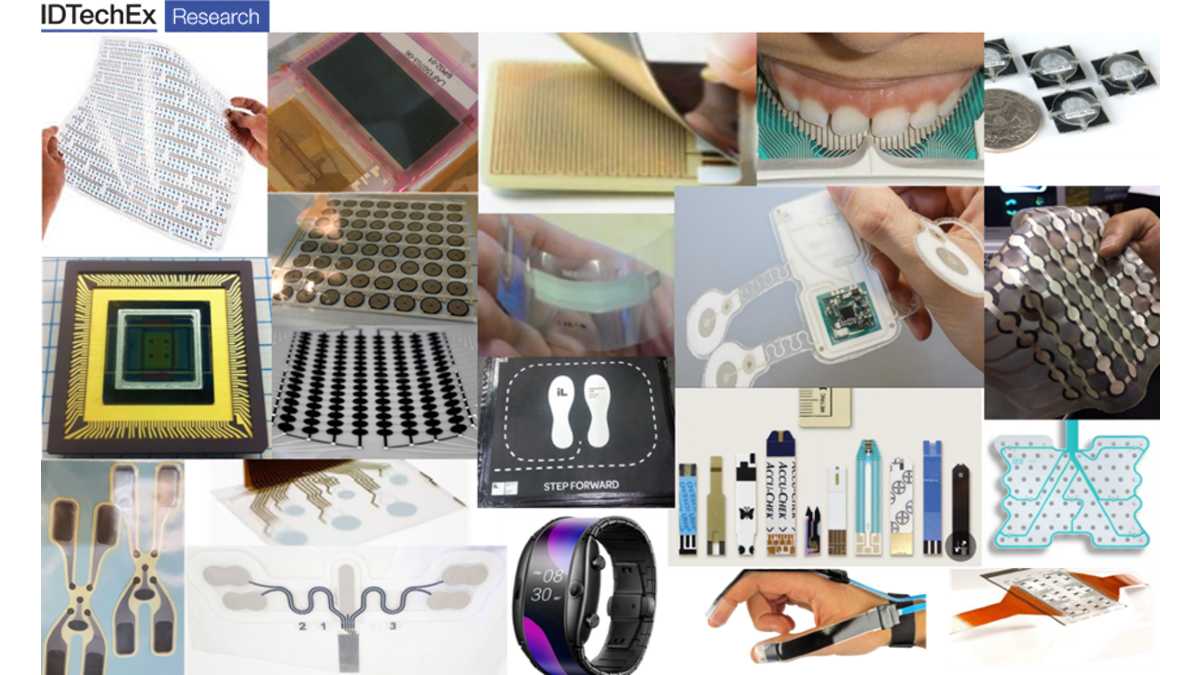 International. The printed/flexible sensor sector can measure a wide range of parameters and can be employed in emerging applications, including industrial IoT, wearable devices, car interiors and smart buildings.
International. The printed/flexible sensor sector can measure a wide range of parameters and can be employed in emerging applications, including industrial IoT, wearable devices, car interiors and smart buildings.
In no particular order, here are IDTechEx's top five innovative printed/flexible sensor technologies along with their associated applications:
1. Piezoresistive and capacitive hybrid sensors: You may be familiar with capacitive touch sensors, which are located, for example, on top of smartphone and tablet screens, and piezoresistive sensors that detect changes in pressure. Both functionalities can be combined within the same multilayer printed film to form hybrid sensors. Such sensors can detect both proximity and pressure, allowing the buttons to light up before contact but only actuated with firm pressure. They can also be used in robot tweezers to detect when 'fingers' are near objects and measure pressure distribution.
2. Thin Film Organic Image Sensors: Most image sensors are made of small rigid pieces of silicon. However, many other semiconductors can also be used to detect light, including printable organic semiconductors. These have the advantage of being very thin, as the light-absorbing layer is only a few hundred nanometers long and are cost-effective to manufacture over large areas, making them applicable to biometric detection, such as fingerprint recognition. In addition, unlike silicon, the absorption spectrum of organic semiconductors can be adjusted, even in the NIR region.
3. Printed pH sensors: Currently, most methods for measuring pH are inaccurate/subjective (universal indicator paper) or relatively expensive (electronic probes with a reference electrode). The German company Accensors has recently developed a method for printing pH sensors, in which a simple and affordable sensor can be created by printing only one nanoliter of a patented material. A printed temperature sensor usually accompanies these pH sensors to ensure accurate readings (since pH is a function of temperature). Printed temperature and pH sensor arrays have been incorporated into the wound monitoring patch prototypes.
4. Moisture detection using RFID: Swedish company InviSense has developed a printable thin-film sensor that can detect moisture. A printed RFID antenna coil is coated with a moisture-absorbing material. As moisture is absorbed, the capacitance associated with the coil also changes, changing its resonance frequency. This can then be detected remotely by an RFID reader. The key advantage of this approach is that the thin film format of the sensor allows it to be placed behind the bathroom tiles and that testing can be performed non-destructively.
5. 'Electronic Noses' of printed gas sensor arrays: In relation to hearing, sight and touch, smell is one of the human senses that has not yet been effectively digitized. One of the challenges is that odors are composed of multiple gas molecules in different concentration ratios. The 'electronic nose' approach to gas detection aims to solve this challenge by using a number of semiconductors, such as carbon nanotubes, which are functionalised slightly differently. By algorithmically comparing the conductivity changes in the different regions of the sensor with reference data, the composition of the gas can be determined.

























Leave your comment